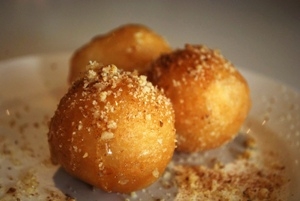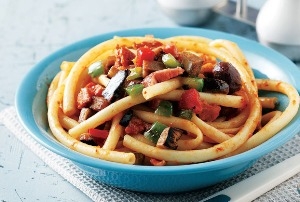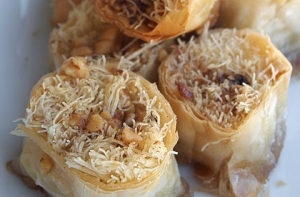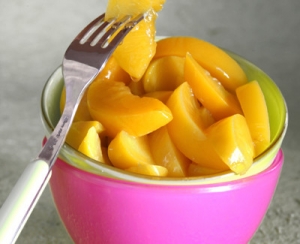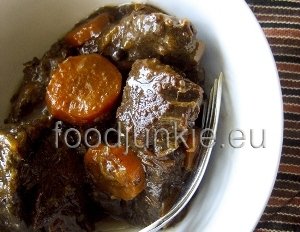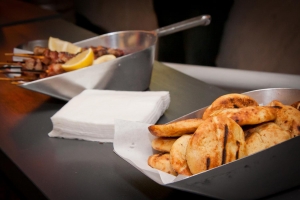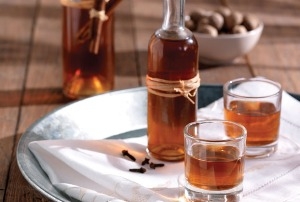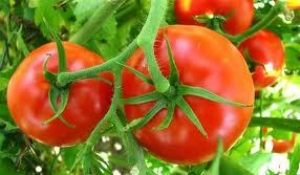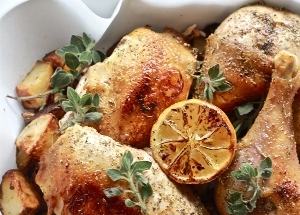Ingredients
500g thick spaghetti
1/3 tea cup of extra virgin olive oil
1 dried onion, cut in thin slices
1 clove of garlic, crushed
2 country sausages, casing removed
1/2 tea cup of dry red wine
1 green bell pepper, cut in cubes
1 red bell pepper, cut in cubes
1 large aubergine, cut in cubes
800g fresh tomatoes, finely chopped
1/2 tea cup of olives, finely chopped
1 sprig of fresh thyme, leaves picked
1 sprig of fresh oregano, leaves picked
grated kefalotiri cheese for serving
salt
freshly ground pepper
Method
Line a baking dish with greaseproof paper. Put the bell peppers and aubergine in a bowl, coat them well with 2 tablespoons of olive oil and then transfer them to the baking dish. Bake them at 200ºC for 10 minutes until they wilt. Cut the sausages in thin slices. In a casserole type pan warm the remaining olive oil and cook the onion and garlic for a couple of minutes until they get translucent but not brown. Add the sausage and stir it in for 2-3 minutes. Add the vegetables, pour the wine in and wait until all liquids evaporate. Then add the tomatoes, herbs and olives. Season with salt and pepper and simmer the sauce for 10 minutes. In the meantime boil the spaghetti and drain them in a colander. Combine them with the sauce, sprinkle with the grated kefalotiri cheese, mix everything well and serve immediately.


